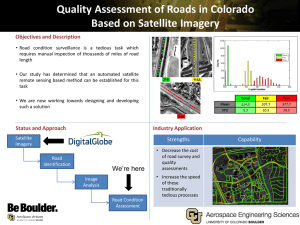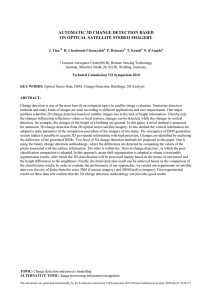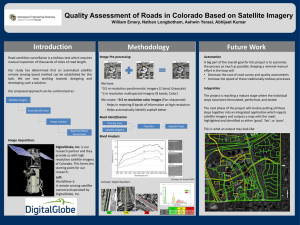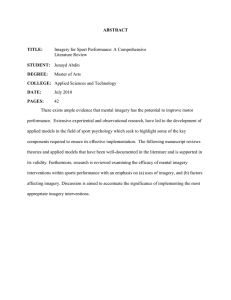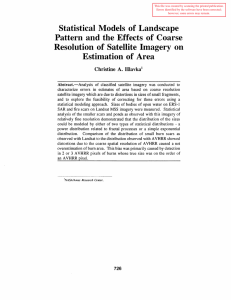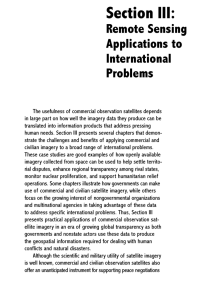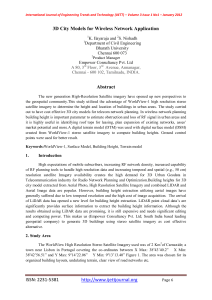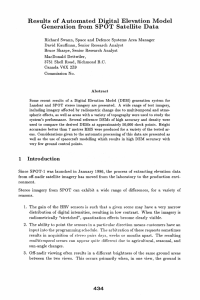R S SC C
advertisement
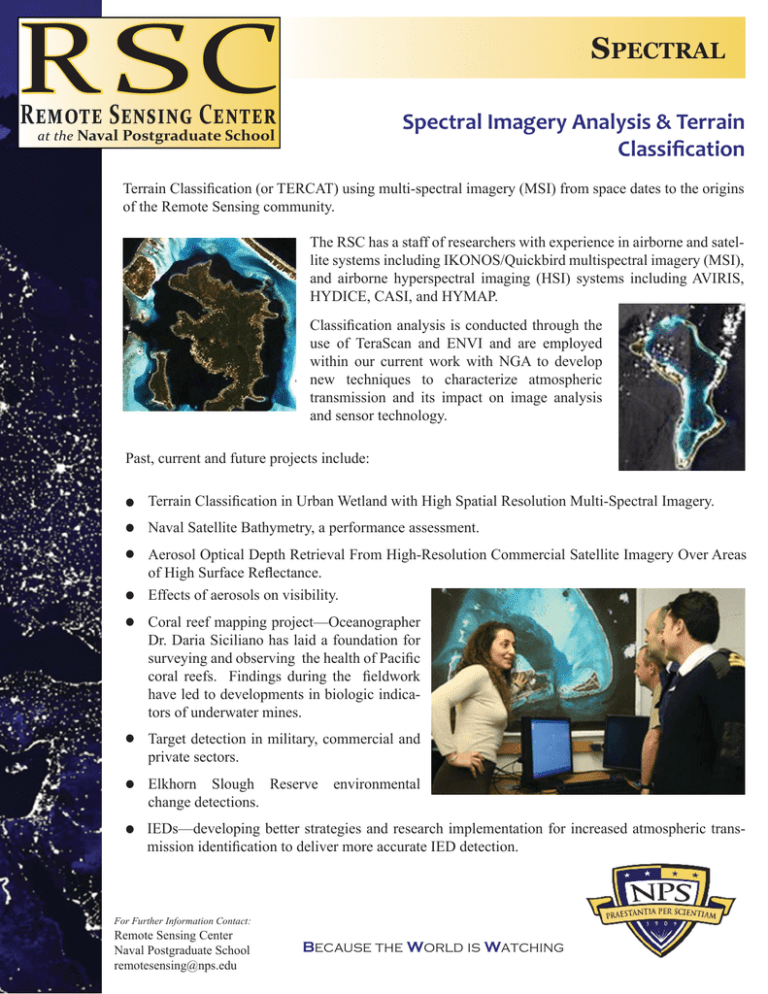
R SC SPECTRAL RĊĒĔęĊ SĊēĘĎēČ CĊēęĊė Spectral Imagery Analysis & Terrain Classification at the Naval Postgraduate School Terrain Classification (or TERCAT) using multi-spectral imagery (MSI) from space dates to the origins of the Remote Sensing community. The RSC has a staff of researchers with experience in airborne and satellite systems including IKONOS/Quickbird multispectral imagery (MSI), and airborne hyperspectral imaging (HSI) systems including AVIRIS, HYDICE, CASI, and HYMAP. Classification analysis is conducted through the use of TeraScan and ENVI and are employed within our current work with NGA to develop new techniques to characterize atmospheric transmission and its impact on image analysis and sensor technology. Past, current and future projects include: Terrain Classification in Urban Wetland with High Spatial Resolution Multi-Spectral Imagery. Naval Satellite Bathymetry, a performance assessment. Aerosol Optical Depth Retrieval From High-Resolution Commercial Satellite Imagery Over Areas of High Surface Reflectance. Effects of aerosols on visibility. Coral reef mapping project—Oceanographer Dr. Daria Siciliano has laid a foundation for surveying and observing the health of Pacific coral reefs. Findings during the fieldwork have led to developments in biologic indicators of underwater mines. Target detection in military, commercial and private sectors. Elkhorn Slough Reserve change detections. environmental IEDs—developing better strategies and research implementation for increased atmospheric transmission identification to deliver more accurate IED detection. For Further Information Contact: Remote Sensing Center Naval Postgraduate School remotesensing@nps.edu Because the World is Watching
